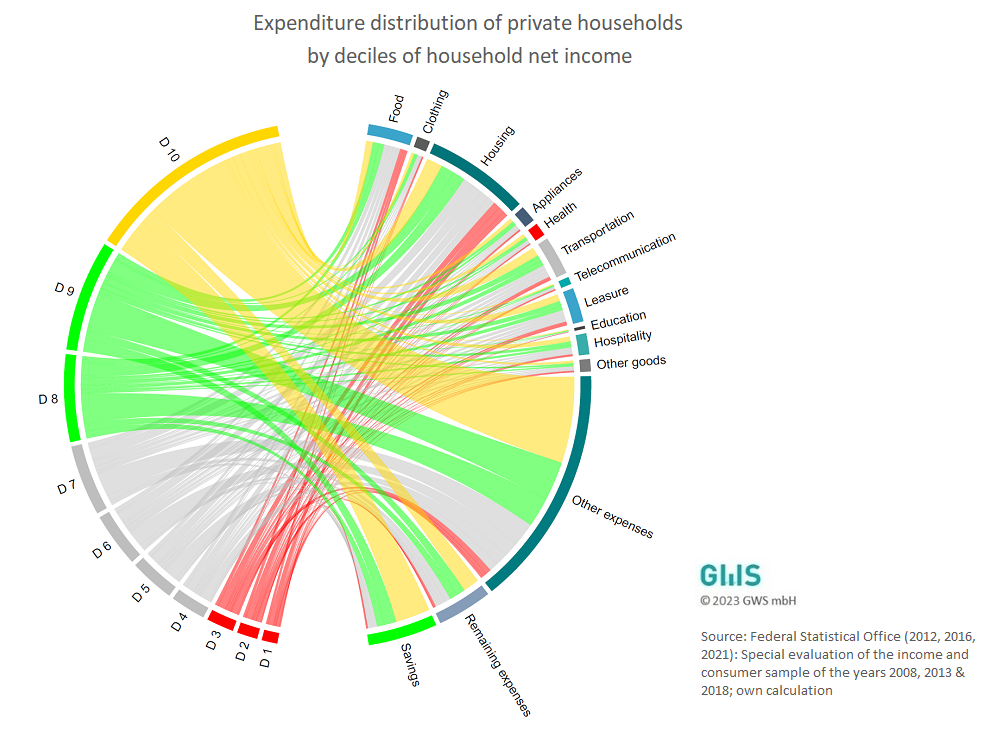World Savings Day – but who saves at all?
Saving is traditionally an important but also sensitive topic in Germany. The Germans have the reputation of being the "world champions in saving". And indeed, the savings rate of Germans is on average over 10% – only a few countries (e.g. Switzerland, the Netherlands) can boast a higher level.[1]
In times of high inflation, saving becomes more difficult for people. Since the start of Russia's war in Ukraine, prices for energy, food and other goods have increased significantly and the inflation rate has risen to a record high.[2] At the same time, wages developed dynamically – but with a time lag – partly due to inflation compensation premiums and minimum wage adjustments. In total, there were six quarters of real wage losses over.[3]
This economic development traditionally has a strong influence on the savings behaviour of private households. However, the consequences of inflation do not affect every household equally. For example, households with proportionately higher expenditures on energy or food are significantly more affected than households with lower expenditures in these areas, as the aforementioned expenditure categories had particularly high inflation rates. The question therefore arises as to what the saving behaviour of private households looks like after inflation and real wage losses.
This question is addressed in the chord diagram below. It shows the "money flows" of private households in the individual expenditure categories in 2023. Private households are divided according to deciles of household net income and the strength of the flow is an indication of a larger or smaller money flow.

In the context of our question, we direct our attention to the lowest expenditure category "savings". What is striking here is that the largest amount of savings is contributed by the richest three deciles (colours green and yellow; 87.3%). The top 10th decile alone saves on average just under 3200 euros per month and thus contributes over 55% to the savings performance of private households in Germany. On the other hand, the savings performance of the bottom three deciles (colour red) is barely visible on the chart. These households, which have been clearly hit by inflation, hardly have the opportunity to save any more. Only the 3rd decile can muster a positive savings performance of 12 euros per month and contributes just under 0.2% to the total savings performance.
Currently, a decline in inflation can be observed and real wages recently rose again for the first time. Especially the deciles of lower incomes are likely to be relieved by the first price cuts. Nevertheless, the road to sustainable savings is still long.
[1] Federal Statistical Office (2023): Sparquote in Deutschland im internationalen Vergleich mit gut 11 % überdurchschnittlich. Zahl der Woche Nr. 43 vom 24. Oktober 2023. https://www.destatis.de/DE/Presse/Pressemitteilungen/Zahl-der-Woche/2023/PD23_43_p002.html, retrieved 26.10.2023.
[2] Federal Statistical Office (2023): Inflation rate at +4.5% in September 2023. https://www.destatis.de/EN/Press/2023/10/PE23_405_611.html, retrieved 26.10.2023.
[3] Federal Statistical Office (2023): Real earnings, net earnings. https://www.destatis.de/EN/Themes/Labour/Earnings/Real-Earnings-Net-Earnings/_node.html, retrieved 26.10.2023.
Other figures can be found here.

